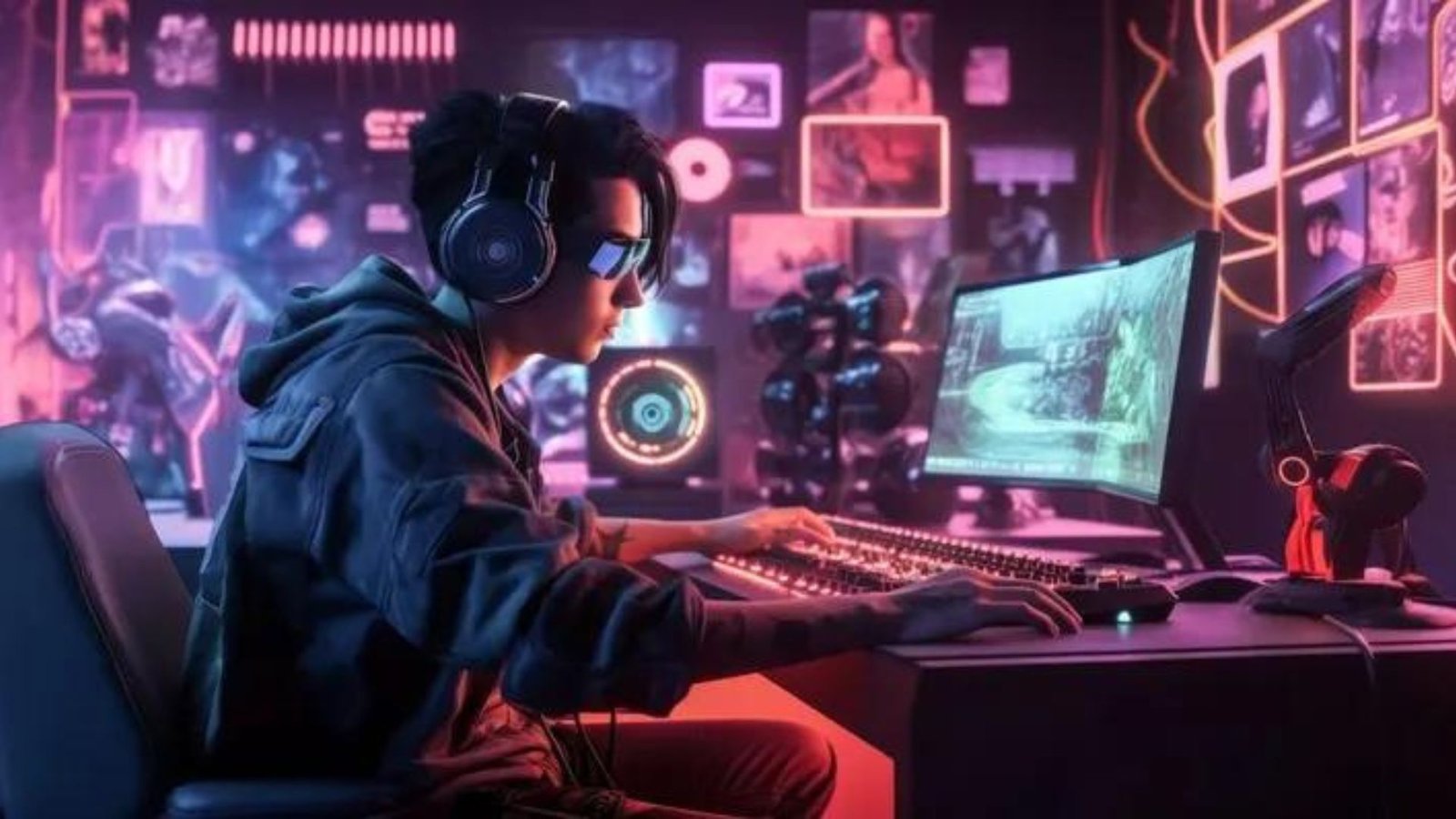The video game industry is constantly evolving, with new technologies and trends reshaping how we play and experience games. As we look ahead, several exciting trends are set to define the future of video games. From advancements in technology to changes in game design, here’s a look at the future trends in video games that will likely shape the industry in the coming years.

1. Virtual Reality (VR) and Augmented Reality (AR)
Virtual Reality (VR) and Augmented Reality (AR) are poised to revolutionize gaming experiences.
VR provides immersive experiences by creating a completely virtual environment, allowing players to feel as though they are inside the game. AR, on the other hand, overlays digital elements onto the real world, blending gameplay with physical environments. Both technologies are becoming more accessible, and their applications in gaming are expanding, offering new ways to interact with and experience games.
2. Cloud Gaming
Cloud gaming is rapidly gaining traction as it allows players to stream games over the internet without needing powerful hardware.
Services like Google Stadia, NVIDIA GeForce Now, and Xbox Cloud Gaming enable players to access high-quality games on various devices, including smartphones and tablets. This trend is making gaming more accessible and reducing the need for expensive consoles or PCs. As internet speeds improve and cloud technology advances, cloud gaming will become increasingly prominent.
3. Artificial Intelligence (AI) in Game Design
Artificial Intelligence (AI) is being integrated into video games to enhance gameplay and create more dynamic experiences.
AI can improve non-playable character (NPC) behavior, making them more responsive and realistic. It also helps in procedural content generation, where AI creates vast game worlds and levels dynamically. Additionally, AI-driven tools can assist in game development by automating tasks and optimizing game design processes. These advancements will lead to more sophisticated and engaging games.
4. Procedural Generation
Procedural generation is a technique used to create game content algorithmically rather than manually designing every element.
This method allows for the creation of vast, diverse worlds and levels without requiring extensive development time. Games like “No Man’s Sky” and “Minecraft” use procedural generation to offer expansive and ever-changing environments. As this technology evolves, we can expect even more innovative and unique game worlds in future titles.
5. Cross-Platform Play
Cross-platform play is becoming more common, allowing players to interact and compete with others across different gaming systems.
Cross-play enables gamers on different platforms, such as PC, consoles, and mobile devices, to play together in the same game. This trend fosters larger, more inclusive gaming communities and ensures that friends can play together regardless of their preferred platform. As more games support cross-platform play, it will enhance multiplayer experiences and connectivity.
6. Enhanced Graphics and Realism
Advancements in graphics technology are pushing the boundaries of realism in video games.
With the release of new graphics cards and gaming consoles, games are achieving higher resolutions, more detailed textures, and more realistic lighting effects. Technologies like Ray Tracing are enhancing visual fidelity, making game environments look more lifelike. As hardware continues to improve, we can expect even greater levels of realism and immersion in future games.
7. Gamification and Interactive Storytelling
Gamification is the application of game design elements to non-game contexts, such as education and training.
Interactive storytelling is another trend, where players influence the narrative through their choices and actions. Games are increasingly incorporating these elements to create engaging and personalized experiences. This trend is expanding the potential of video games beyond entertainment, offering new ways to learn, train, and interact.
8. Blockchain and NFTs
Blockchain technology and Non-Fungible Tokens (NFTs) are making waves in the gaming industry by introducing new ways to own and trade digital assets.
Additionally, Blockchain allows for transparent and secure transactions, while NFTs enable players to own unique in-game items, characters, or even entire game worlds. This trend is creating new economic models for games and offering players more control over their digital possessions. However, it also raises questions about the environmental impact and the future of digital ownership.
9. Increased Focus on Diversity and Inclusion
The gaming industry is placing a greater emphasis on diversity and inclusion, both in terms of game content and the industry workforce.
Games are increasingly featuring diverse characters, stories, and settings that reflect a broader range of experiences. Additionally, there is a growing effort to ensure that the gaming industry is inclusive and welcoming to people from all backgrounds. This trend is helping to create a more representative and equitable gaming environment.
10. Advanced AI Companions
AI companions are becoming more sophisticated, offering players more dynamic and interactive experiences.
These companions can assist with tasks, provide context-aware advice, and adapt to the player’s behavior. Games like “The Last of Us Part II” have demonstrated the potential of advanced AI in creating more believable and engaging characters. As AI technology continues to develop, we can expect even more advanced and lifelike companions in future games.
Conclusion
In conclusion, the future trends in video games are set to transform the industry in exciting ways. Virtual Reality (VR) and Augmented Reality (AR) will offer immersive and blended experiences, while cloud gaming will make high-quality games more accessible. Artificial Intelligence (AI) and procedural generation will enhance game design and gameplay, and cross-platform play will foster larger gaming communities.
Enhanced graphics and realism, gamification, and interactive storytelling will push the boundaries of what games can offer. Blockchain and NFTs are introducing new economic models, and increased focus on diversity and inclusion is creating a more representative gaming environment. Advanced AI companions will further enrich gaming experiences.
These trends highlight the ongoing innovation in the gaming industry and promise to deliver even more engaging and groundbreaking experiences for players in the years to come.

